

Z-Type. 21 GIFs That Explain Mathematical Concepts. “Let's face it; by and large math is not easy, but that's what makes it so rewarding when you conquer a problem, and reach new heights of understanding.”
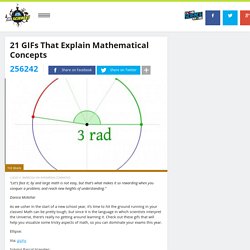
Danica McKellar As we usher in the start of a new school year, it’s time to hit the ground running in your classes! Math can be pretty tough, but since it is the language in which scientists interpret the Universe, there’s really no getting around learning it. Check out these gifs that will help you visualize some tricky aspects of math, so you can dominate your exams this year. 10 of the Most Surprising Findings from Psychological Studies. Ultra Ever Dry. Brainstorm and mind map online. Thinkmap Visual Thesaurus - An online thesaurus and dictionary of over 145,000 words that you explore using an interactive map. Dentsu: paint sound sculptures. Oct 06, 2010 dentsu: paint sound sculptures the creative studio dentsu, teamed up with photographer linden gledhill to create this series of paint sculptures using sound vibrations. the series was part of a campaign for canon’s pixma ink printer brand. the photographs and videos begin by wrapping a membrane around a small speaker. ink drops were placed on this membrane and the speaker was turned on. once it began to vibrate the ink begins to jump up and down. high-speed video cameras and still cameras were used to capture this including circling around the sculptures to see them from all angles. experimenting with different sounds and frequencies created the various pieces.
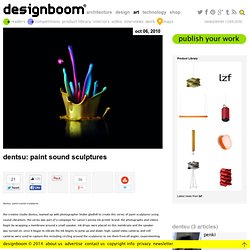
Creators - Dedicated to inspiring designers, inventors & the creative spirit in all of us. August 22, 2013 Artist’s Work Paints a Beautiful Picture Animations Tyrus Wong, a 102-year-old artist’s work influenced the visual direction of Bambi in 1941.

An exhibition at the Walt Disney Family Museum in San Francisco will be held to celebrate Wong’s work. According to the Disney Museum site, the drawings felt different from what is commonly known for Disney animation and this is what caught Walt Disney’s eye. Infographics & Data Visualization. MIT Creates Amazing UI From Levitating Orbs.
Anyone else see The Avengers?
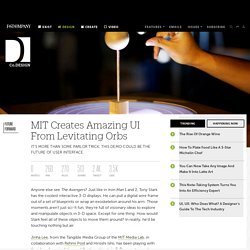
Just like in Iron Man 1 and 2, Tony Stark has the coolest interactive 3-D displays. He can pull a digital wire frame out of a set of blueprints or wrap an exoskeleton around his arm. Those moments aren’t just sci-fi fun; they’re full of visionary ideas to explore and manipulate objects in 3-D space. Except for one thing: How would Stark feel all of these objects to move them around? In reality, he’d be touching nothing but air. Jinha Lee, from the Tangible Media Group of the MIT Media Lab, in collaboration with Rehmi Post and Hiroshi Ishii, has been playing with the idea of manipulating real floating objects in 3-D space to create a truly tactile user interface. It’s essentially a small field in which gravity doesn’t overcome an object. “There is something fundamental behind motivations to liberate physical matter from gravity and enable control. Interviewing Lee, I realized he’s one-part scientist, one-part philosopher.
How Do You Create A Culture Of Innovation? This is the third part in a series by Scott Anthony, author of The Little Black Book Of Innovation.
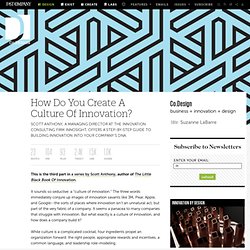
It sounds so seductive: a “culture of innovation.” The three words immediately conjure up images of innovation savants like 3M, Pixar, Apple, and Google--the sorts of places where innovation isn’t an unnatural act, but part of the very fabric of a company. It seems a panacea to many companies that struggle with innovation. But what exactly is a culture of innovation, and how does a company build it? While culture is a complicated cocktail, four ingredients propel an organization forward: the right people, appropriate rewards and incentives, a common language, and leadership role-modeling. The Innovator’s DNA Has Four Components If you ask most people what makes a great innovator, the most common response is innate gifts from parents or a higher power. At the core is what the professors call “associational thinking.”
Questioning: Asking probing questions that impose or remove constraints. Cinemagraphs: Images that come alive. Phil Hansen: The art of the imperfect. 29 ways to stay creative. How we change what others think, believe, feel and do.
Aerial Data Visualisation Reveals Life In The United States. PBS is exploring the hidden patterns and rhythms that make America work.
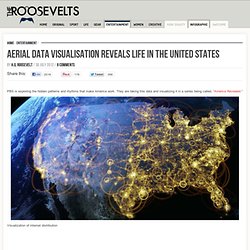
They are taking this data and visualizing it in a series being called, “America Revealed.” Visualization of internet distribution The pinpointed distribution of the unemployed Domino’s Pizza’s raw ingredients’ delivery routes in the Northeast U.S. electricity network routes. Lesson Plan for Making a Speaker Laboratory. ©1995 The Regents of the University of California by Regan Lum Introduction: A speaker is a device that converts an electronic signal into sound.
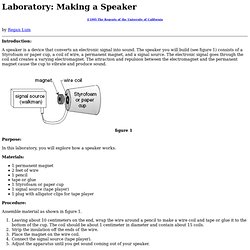
The speaker you will build (see figure 1) consists of a Styrofoam or paper cup, a coil of wire, a permanent magnet, and a signal source. The electronic signal goes through the coil and creates a varying electromagnet. Figure 1. LED Lights Make Augmented Vision a Reality. LED Lights Make Augmented Vision a Reality Okay, this is just freaky.

We know LED lights are versatile enough to be used for practically anything, but LED contact lenses? Really?! Yes, as it turns out, really. University of Washington researchers have figured out how to implant semitransparent red and blue LED lights in contact lenses, for the purpose of receiving and displaying data in sharp visual images and video. Once miniature green LEDs are developed (and they’re in the works, as of now), full color displays will be possible. Lead researcher Babak Parvis comments “You won’t necessarily have to shift your focus to see the image generated by the contact lens,” it would just appear in front of you and your view of the real world will be completely unobstructed when the display is turned off. Ah, the real world. The Noun Project. 877e2e8b216a52b9bfe2edf40ebdd861.jpg 806×850 pixels. The Internet's Mall. Show Homens Luzes - Wrecking Crew Orchestra.